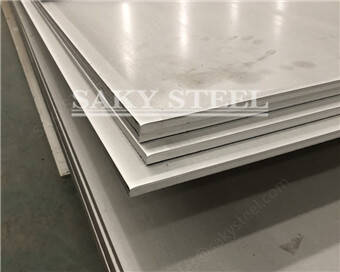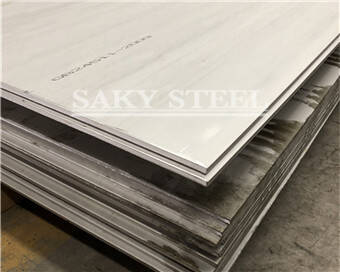When selecting stainless steel materials, 3Cr12 and 410S are two commonly used options. While both are stainless steels, they exhibit significant differences in chemical composition, performance, and application areas. This article will delve into the key differences between these two stainless steel plates and their respective applications, helping you make informed choices for your projects.
What is 3Cr12 stainless steel?
3Cr12 stainless steel sheet is a ferritic stainless steel containing 12% Cr, which is equivalent to the European 1.4003 grade. It is an economical ferritic stainless steel used to replace coated carbon steel, weathering steel and aluminum. It has the characteristics of simple processing and manufacturing, and can be welded by conventional welding technology. It can be used to make: motor vehicle frames, chassis, hoppers, conveyor belts, mesh screens, conveying troughs, coal bins, containers and tanks, chimneys, air ducts, and outer covers , Panels, sidewalks, stairs, rails, etc.

What is 410S stainless steel?

410S stainless steel is a low-carbon, non-hardening modification of the martensitic stainless steel 410. It contains about 11.5-13.5% chromium and small amounts of other elements such as manganese, phosphorus, sulfur, silicon, and sometimes nickel. The lower carbon content of 410S improves its weldability and reduces the risk of hardening or cracking during welding. However, this also means that 410S has lower strength compared to standard 410.Offers good corrosion resistance, particularly in mild environments, but is less resistant than austenitic stainless steels like 304 or 316.
Ⅰ.3Cr12 and 410S Steel Plate Chemical Composition
According to ASTM A240.
| Grade | Ni | C | Mn | P | S | Si | Cr |
| 3Cr12 | 0.3-1.0 | 0.03 | 2.0 | 0.04 | 0.030 | 1.0 | 10.5-12.5 |
| 3Cr12L | 0.3-1.0 | 0.03 | 1.5 | 0.04 | 0.015 | 1.0 | 10.5-12.5 |
| 410S | 0.75 | 0.15 | 1.0 | 0.04 | 0.015 | 1.0 | 11.5-13.5 |
Ⅱ.3Cr12 and 410S Steel Plate Properties
3Cr12 Stainless Steel:Exhibits good toughness and weldability, suitable for various processing methods.Offers moderate strength and wear resistance, making it capable of withstanding certain mechanical stresses.
410S Stainless Steel:Features higher hardness, making it suitable for high-temperature applications, but has poorer weldability.Its strength and heat resistance make it excel in high-temperature conditions.
| Grade | Rm(MPa) | Max Hardness(BHN) | Elongation |
| 3Cr12 | 460 | 220 | 18% |
| 3Cr12L | 455 | 223 | 20% |
| 410S | 415 | 183 | 20% |
Ⅲ.3Cr12 and 410S Steel Plate Application Areas
3Cr12:Widely used in chemical equipment, food processing equipment, and construction materials.Its good corrosion resistance makes it ideal for humid and acidic environments.
410S:Commonly utilized in turbine components, boilers, and heat exchangers in high-temperature environments.Suitable for applications that require heat and wear resistance.
Ⅳ.Comparison Summary
Key Features of 3Cr12:
• Composition: Chromium content of 11.0–12.0%, carbon content ≤ 0.03%.
• Corrosion Resistance: Suitable for mildly corrosive environments, such as structural components, mining equipment, and general industrial applications.
• Weldability: Good welding performance due to its low carbon content.
| Standard | Grade |
| South African Standard | 3Cr12 |
| European Standard | 1.4003 |
| U.S. Standard | UNS S41003 (410S) |
| International Standard | X2CrNi12 |
• 410S: Higher hardness but slightly lower toughness, lacks titanium, has moderate weldability, and is suitable for general corrosion-resistant applications.
• 3Cr12: Low carbon, cost-effective, suitable for mildly corrosive environments, with good weldability.
Post time: Oct-24-2024